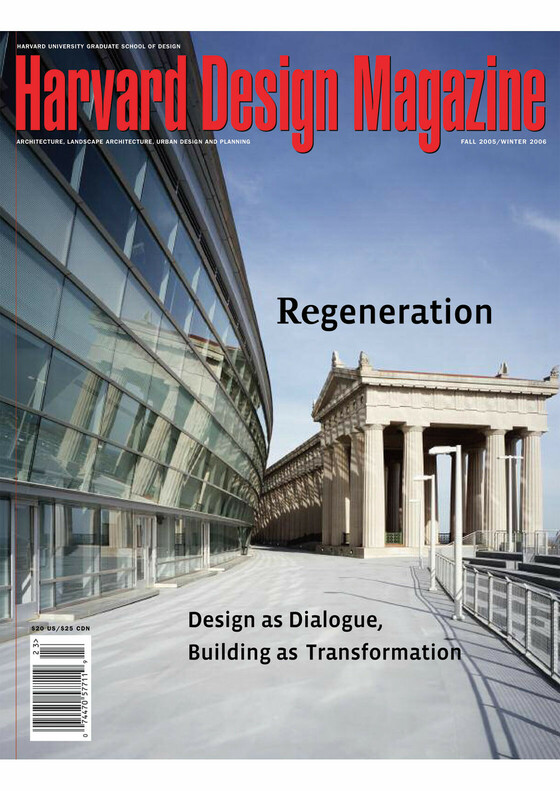Innovation and Insight in the Contemporary Architecture of Additions
23: Regeneration: Design as Dialogue, Building as Transformation

“Nothing will come of nothing.” In the next decades designers will need ot shift their prime paradigm from drawing on blank slates and to adaptively redesign the already designed and built environment. This shift, which will be necessitated by increasing resource shortages and the need for sustainability, could be thought of as threatening designers’ creativity and autonomy, but such an assumption is based on the treacherous belief that monologues are “freer” than dialogues, that one cannot bring oneself into being more fully in a rich, demanding responsiveness to givens, like transformations of rail yards into parks, malls into housing, or military bases into villages, and adding onto rather than tearing down buildings. Harvard Design Magazine 23 focuses on and theorizes exciting, effective, urgent, and rich redesign or “co-design” (additions)—past, present, and future.
Jeffrey Inaba, Peter Zellner
Peter Buchanan
Daniel Willis, Todd Woodward
Thomas Spector
James S. Ackerman
Wilfried Wang
Paul Spencer Byard
Sebastian Schmaling
Jeffrey Kipnis
Barry Bergdoll
Richard T.T. Forman
Sarah Williams Goldhagen
Kenneth Frampton
Alan Berger
Ken Greenberg
Jan Otakar Fischer
Christopher Long